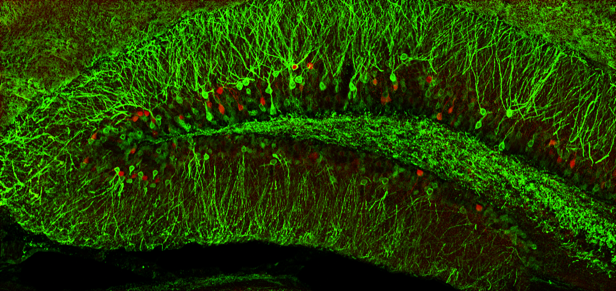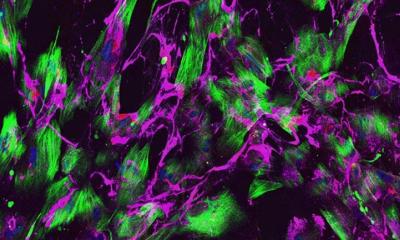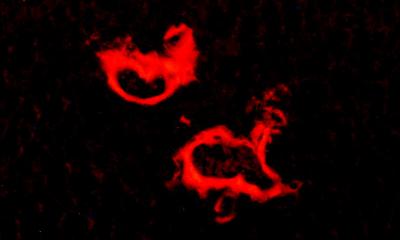News • Neuron activation
Memories “Lost” to Alzheimer’s May Be Retrievable
Columbia University Medical Center researchers have found that it may be possible to access memories “lost” to Alzheimer’s disease, if their discoveries about memory loss in mice also apply to people with the disease.
The researchers’ findings, published in the journal Hippocampus, have the potential to shift the view of Alzheimer’s as a disease that destroys memories to a disease that disrupts the brain’s ability to recall memories. Study leader Christine A. Denny, PhD, assistant professor of clinical neurobiology (in psychiatry), says her research team found that in mice with Alzheimer’s, the disease did not destroy memories but instead interfered with the ability to recall them. Using optogenetics—a technique that uses laser light to activate specific neurons in the brain—her team was able to restore a lost memory in mice.

“This has exciting implications for those of us who research the brain,” says Dr. Denny, senior author of the paper. “If we find that memories are still stored in the brains of people with Alzheimer’s disease, we may be able to develop treatments, or use existing therapies such as deep brain stimulation, to help people regain access to these memories.”
If we find that memories are still stored in the brains of people with Alzheimer’s disease, we may be able to develop treatments to help people regain access to these memories. In the study, lead author Jennifer Perusini, PhD, used a line of mice that Dr. Denny previously developed that enables her to detect recorded and recalled memories in the brain. In these mice, a yellow fluorescent dye permanently marks the neurons when they record a new memory. When the mice recall that memory, a red fluorescent dye permanently marks the active cells. Cells with overlapping yellow and red labels represent what is called a memory trace.
Dr. Denny and her team then examined memory formation and retrieval in healthy and Alzheimer’s mice. Both sets of mice learned to associate a lemon scent with a mild electric shock. That memory was tested a week later when the mice were re-exposed to the scent. The healthy mice remembered the lemon scent and its consequences: They froze with fear. In contrast, the Alzheimer’s mice had trouble remembering and froze about half as often as their healthy counterparts.
Deep brain stimulation or drugs that improve memory retrieval may help treat cognitive memory loss in people with Alzheimer’s disease.
Christine A. Denny, PhD
When the researchers looked at the neurons of the Alzheimer’s disease mice to identify the problem, they saw the yellow marker that indicated the memory had been recorded. But different neurons were marked red, suggesting that the mice recalled a different memory. The Alzheimer’s mice were able to recall the correct memory with a little help from the researchers. Using laser light to stimulate the memory-storing neurons, the “lost” memory was accessed.
“The next step is to determine if the same memory storage and retrieval mechanisms exist in people with Alzheimer’s disease,” Dr. Denny says. Unfortunately, laser light cannot be used in human brains to retrieve lost memories because the genetic engineering that makes neurons sensitive to light uses specially designed viruses not appropriate for use in people. But in the future, “deep brain stimulation or drugs that improve memory retrieval may help treat cognitive memory loss in people with Alzheimer’s disease,” she says.
Quelle: Columbia University Department of Psychiatry
27.08.2017








